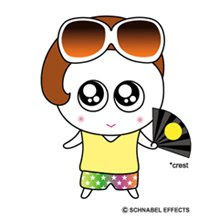**
Since early 1950's, I have been watching lots of American and Japanese animated cartoons. Among fine animations by Walt Disney, Osamu Tezuka and many others, I still love to see the shorts of "Tom & Jerry" by William Hanna and Joseph Barbera, and of "Woody Woodpecker" by Walter Lantz.
The short films of "Tom & Jerry" center on a never-ending rivarly between a housecat (Tom) and a mouse (Jerry) whose chases and battles often involve comic violence. While, "Woody Woodpecker" is a noisy woodpecker who bores holes in all kinds of things.
The two cartoons are similar in every point:
- the shorts run only for 7 ~ 8 minutes
- they tend to use vivid/original colors
- every-second scene has a sense of humor and wits
- main characters are active in high spirits
- they are big stars: "Tom & Jerry" got Academy Award (Oscar) for Best Short Subject: Cartoons for seven times! And, "Woody" has a motion picture star on the Hollywood Walk of Fame!
I highly appreciate that the U.S. TV stations still show us the animations from time to time.#
computer graphics in feature film
13 years ago



